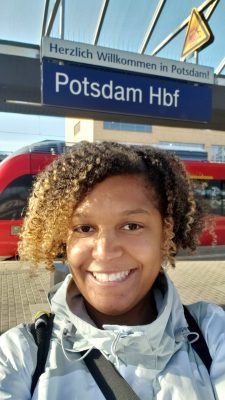Funded CBE Fellowships
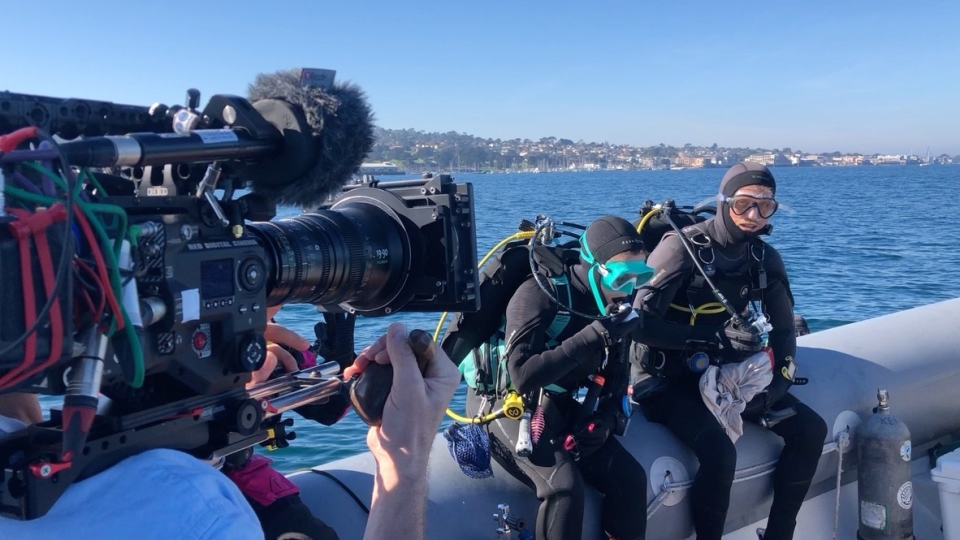
For graduate students, the chance to gain professional experience and field-specific knowledge through real-world opportunities is invaluable.
Students enrolled in the Environmental Policy and Management masters program who are specializing in Ocean and Coastal Resource Management are eligible for funded Center for the Blue Economy positions throughout the year, with full-time positions during the summer and during their practicums. The CBE Summer Fellows process begins in early spring to identify opportunities with innovative and internationally recognized marine organizations. The center provides a list of possibilities, and students may suggest additional fellowship organizations. Each project must positively affect ocean and coastal sustainability, help the host organization fill a critical need, and better prepare our students for their future careers. Below is a list of our most recent summer fellows. Their stories, along with tales from our CBE Summer Fellows and past fellows can be found at our CBE Summer Fellows Blog.
Center for the Blue Economy 2025 Summer Fellows
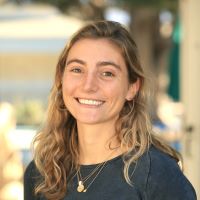
Student name: Sylvie Alexander
Environmental Defense Fund (EDF)
San Francisco, California, USA
June 16 to August 21, 2025
Oceana
Monterey, California, USA
February 15 to June 30, 2025
This summer Sylvie will be finishing one fellowship and beginning another, with some overlap. For EDF, Sylvie is supporting a collaborative effort to advance mesopelagic zone conservation. Working with the EDF Ocean Science team and partners at Ocean Conservancy, she is contributing to a threats assessment that synthesizes climate change impacts to reduction fisheries to better understand mesopelagic fishing pressure moving forward. This work aims to inform and strengthen science-based conservation strategies for this little-known but ecologically vital part of the ocean.
For Oceana, Sylvie is working to assess the intersection of renewable energy development and ocean conservation in California. Through a landscape analysis of current and emerging renewable energy projects—such as offshore wind and utility scale solar and battery storage—she is identifying potential ocean ecological impacts and opportunities for advocacy. Her work will help shape Oceana’s strategic approach to ensuring ocean-friendly renewable energy solutions moving forward.
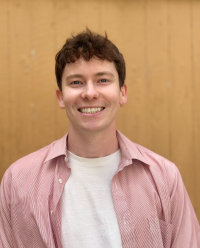
Student Name: Nate Buchanan
OneShoreline
San Mateo, California, USA
May 26 to August 18, 2025
This summer, Nate is supporting climate resilience and community engagement efforts with the San Mateo County Flood and Sea Level Rise Resiliency District (also known as OneShoreline). He works on policy analysis and public engagement for the Millbrae and Burlingame Shoreline Resilience Project. His work includes assisting in communicating complex alternatives information to the general public, development of outreach materials, participation in community workshops, and using ArcGIS to convey the project context and preferred alternative.
He is also involved in developing grant proposals to fund multi-jurisdictional sea-level rise (SLR) adaptation plans for five cities on San Mateo County’s Bay side. He conducts research into the Bay Conservation and Development Commission’s (BCDC) Regional Shoreline Adaptation Plan and explores multi-jurisdictional sea level rise adaptation planning. Through his work, Nate helps advance regional collaboration on SLR adaptation, climate preparedness, and equity in the San Francisco Bay Area.
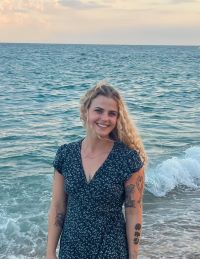
Student Name: Sophie Doddimeade
The Wahine Project
Monterey, California USA
June 9 to August 31, 2025
This summer, Sophie will be supporting The Wahine Project by enhancing their youth educational programming centered on environmental awareness, ocean stewardship, and social empowerment. Her project will focus on designing, planning, and implementing an engaging, age-appropriate curriculum for the organization’s “Trash Tuesdays” and “Women Wednesdays” initiatives—interactive weekly sessions that explore sustainability, ocean conservation, social justice, and the importance of community action. Her work this summer hopes to institutionalize a structure for educational/learning materials, creating an online accessible archive for future beach educators to use. In addition to supporting existing programming, Sophie will contribute to the development of new educational content that addresses critical topics such as climate change, marine ecosystems, and inclusivity in outdoor (particularly ocean/coastal) spaces.
As The Wahine Project aims to inspire and empower children of all ages, backgrounds, and abilities to become thoughtful, informed environmental stewards and community leaders, this project entwines Sophie’s passion for social justice, environmental action, and community-building. Another facet of Sophie’s project is assisting research grant funding to expand The Wahine Project’s impact, exploring different ways to bridge children’s outdoor experiences, environmental education, and empowerment, and supporting other factors as required.
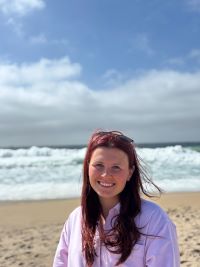
Student Name: Elena Gavigan
International Marine Mammal Project at Earth Island Institute
Berkeley, California USA
June 2nd to August 15, 2025
Elena will conduct holistic assessments of the current Whale Safe program at the UCSB Benioff Ocean Science Laboratory and the in-progress program at the Woods Hole Oceanographic Institute. Through her assessments, she will recommend how the International Marine Mammal Project can promote and provide support for whale-safe shipping campaigns to prevent ship strikes on endangered whales, including critically endangered NE Atlantic right whales. Elena will also compile a repository of marine mammal deaths in the United States from 2024 caused by marine plastic pollution. She will secure and evaluate necropsy results, news articles, and announcements from verified marine wildlife care and stranding centers to discover patterns of plastic ingestion and entanglement and attempt to determine the sources of plastic pollution.
Student Name: Thomas Richards
Elkhorn Slough Reserve
Moss Landing/Royal Oaks, California USA
June 4 to August 31, 2025
Thomas will be working on various projects at Elkhorn Slough reserve, mainly related to education, outreach, and policy. He will help with summer education programs, preparation of materials for young professionals in the climate adaption field, and policy and outreach issues related to work in Kirby Park.
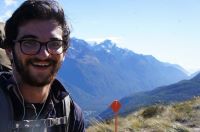
Student Name: Miles Tepper
Environmental Defense Fund
San Francisco, California USA
June 2 to August 7, 2025
Miles will be working with EDF’s Ocean Science Team within their Global Fisheries projects, supporting FishSCORE, an UN endorsed program to build a global network to sustain, protect, and secure equitable benefits from fisheries in a changing ocean, by assisting in the analysis of information collected from participants in the FishSCORE Network.
Student Name: Shimeng (Jasmine) Zhu
Monterey Bay Aquarium Research Institute (MBARI)
Moss Landing, California USA
June 9 to August 15, 2025
Jasmine will support the coordination of the Adopt-A-Float program, an education and outreach initiative. Her responsibilities will include communicating with educators and other interested partners, and developing outreaching content.
Past and Current Summer Fellows Blogs
To see more of the work accomplished by CBE Summer Fellows, please visit our CBE Summer Fellows Blog where the students describe their experiences. You’ll see a link there for Past Summer Fellows with posts back to our cohort of 2015. Show here is Kimberly Aiken, CBE summer fellow in 2019 during her fellowship with the Alfred Wegener Institute (AWI) at the German Arctic office: You can read about Kimberly’s current position in her November 2024 article: How I Got Hired: Communications Officer, Arctic Council Sustainable Development Working Group.
Summer Fellows Host Organizations
The Center for the Blue Economy Summer Fellowships prepare students for careers that have an immediate positive impact on ocean and coastal sustainability. Below is our list of partner organizations that host CBE Summer Fellows. The year indicates when students were first and most recently engaged with that organization. Research and deliverables produced by the students during these fellowships is sometimes published by the organizations or the CBE.
| Year | Partner Organization |
| 2011-25 | Environmental Defense Fund (EDF) |
| 2025 | OneShoreline |
| 2018-2025 | The Wahine Project |
| 2025 | International Marine Mammal Project at Earth Island Institute |
| 2025 | Elkhorn Slough Reserve |
| 2025 | Monterey Bay Aquarium Research Institute |
| 2024 | Washington Maritime Blue |
| 2024 | Alaska Native Tribal Health Consortium |
| 2023 | United Nations Development Programme (UNDP) |
| 2023 | MarViva |
| 2023 | Sailors for the Sea |
| 2023 | Oceans Risk and Resilience Action Alliance (ORRAA) |
| 2011-23 | IUCN (International Union for Conservation of Nature) |
| 2011–23 | Wild Aid |
| 2011–23 | World Wildlife Fund (WWF) |
| 2011-24 | Environmental Defense Fund (EDF) |
| 2011-23 | Conservation International |
| 2012–23 | World Resources Institute |
| 2013-23 | National Oceanic and Atmospheric Administration (NOAA) |
| 2014-23 | The Nature Conservancy |
| 2014-23 | National Ocean Economics Program |
| 2015–23 | California Coastal Commission (CCC) |
| 2018-23 | Business for Social Responsibility |
| 2018-23 | Monterey Bay Fisheries Trust |
| 2020-23 | Ocean Protection Council |
| 2020-23 | Seafood Solutions |
| 2020-23 | Surfrider |
| 2021-23 | Inland Ocean Coalition |
| 2021 | NYC Mayor’s Office of Resiliency |
| 2021 | Whale Shark and Oceanic Research Center |
| 2021 | Anthropocene Institute’s Protected Seas |
| 2021 | Pacific Ocean Energy Trust |
| 2021 | Humboldt County - Planning and Building Department |
| 2013–25 | Oceana |
| 2020 | Naval Postgraduate School |
| 2019 | Alfred Wegener Institute, German Arctic Office |
| 2019 | Tijuana River National Estuarine Research Reserve |
| 2012-18 | One Reef |
| 2013-18 | National University of Galway, Socio-Economic Marine Research Unit |
| 2017–18 | Think Beyond Plastics |
| 2018 | E2E Foundation |
| 2013-17 | Save the Waves |
| 2013-17 | Maersk Drilling and Shipping |
| 2014–16 | Environmental Justice Foundation |
| 2014-16 | United Nations Environment Programme (UNEP) Global Programme of Action |
| 2015–16 | Both Company |
| 2015–16 | Root Solutions/Marine Mammal Center |
| 2016 | Pelagic Data Systems |
| 2012-15 | United Nations Education, Scientific, and Cultural Organization (UNESCO) |
| 2014 | Eco Viva |
| 2014 | Scripps Institution of Oceanography, UCSD |
| 2012-13 | Fish Wise |
| 2013 | Driscoll’s |
| 2013 | KAI Marine Services |
| 2013 | Ocean Recovery Alliance |
| 2013 | Tree Kangaroo Conservation Program |
| 2012 | Jane Goodall Institute |
| 2012 | Tobacco Caye Marine Station |

